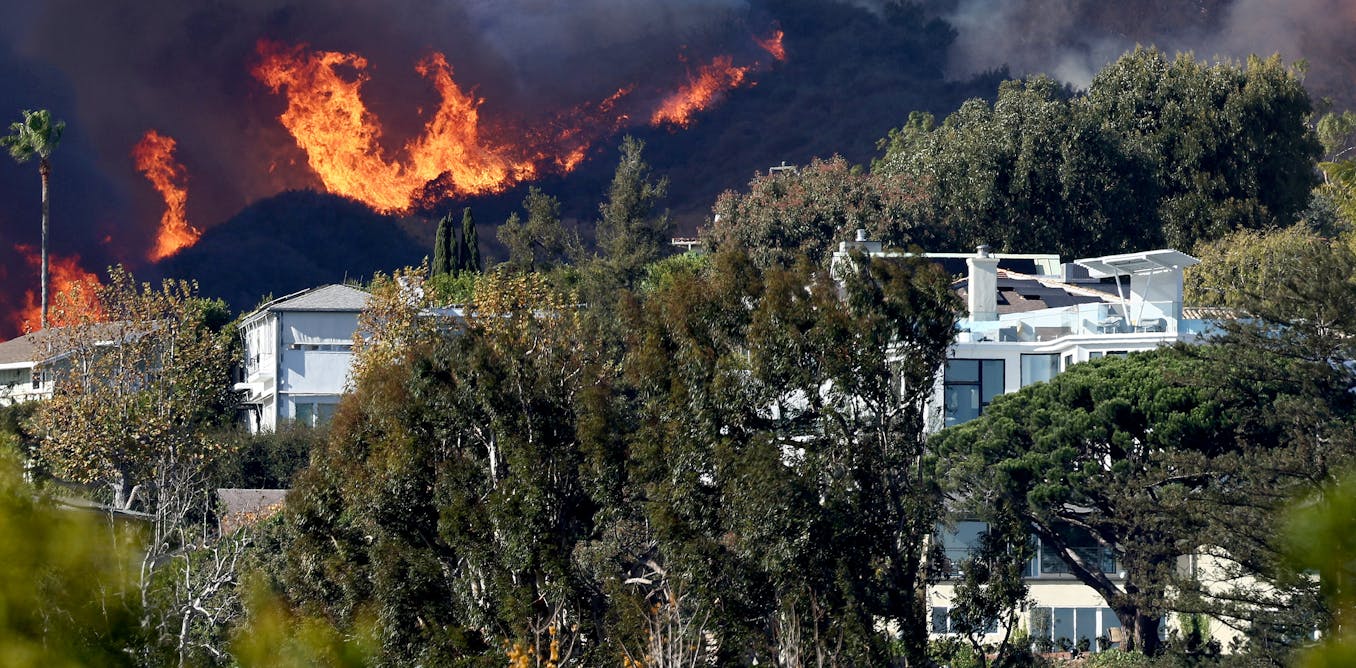Unveiling the Dry Spell: Southern California’s Parched Landscape Fuels Wildfires
Southern California is currently experiencing an alarming dry spell, a condition that has become increasingly severe over recent years. This prolonged drought has created a perfect storm for wildfires, with vast stretches of land turning into parched landscapes. As the region battles unprecedented dryness, understanding the implications of these conditions is crucial for residents, policymakers, and environmentalists alike.
The Severity of the Drought
Recent maps illustrating drought conditions in Southern California reveal a startling reality. According to the U.S. Drought Monitor, large portions of the region are classified as experiencing “extreme” to “exceptional” drought conditions. These classifications are not merely academic; they carry significant implications for water availability, agriculture, and, most critically, wildfire risk.
In Southern California, the dry spell has been exacerbated by a combination of factors:
- Climate Change: Rising temperatures and changing precipitation patterns have intensified drought conditions.
- Urban Development: Expanding urban areas have led to increased water usage, putting further strain on already limited resources.
- Vegetation Growth: Years of wetter conditions prior to the current drought allowed for excessive vegetation growth, which now serves as ample fuel for wildfires.
How Dry Conditions Foster Wildfires
The connection between Southern California’s dry spell and the increasing frequency and intensity of wildfires is well-documented. When vegetation becomes desiccated, it becomes highly flammable. This situation is worsened by the presence of Santa Ana winds, which can whip through the region, spreading flames rapidly.
Moreover, the landscape in Southern California is uniquely vulnerable:
- Topography: The hilly terrain can create microclimates, where small changes in weather can lead to rapid fire growth.
- Native Flora: Many native plant species, such as chaparral, are adapted to fire but can become devastating when drought conditions prevail.
- Human Activity: With increased recreational activities in dry areas, the risk of human-caused ignitions rises significantly.
The Economic and Ecological Impact
The economic ramifications of wildfires fueled by the dry spell are profound. In recent years, California has witnessed billions of dollars in damages due to wildfire-related destruction. This includes:
- Property Loss: Homes and businesses are often at risk, leading to devastating losses for families and communities.
- Emergency Response Costs: State and federal resources are stretched thin as firefighting efforts become increasingly necessary.
- Insurance Rates: As the risk of wildfires grows, insurance rates may rise, affecting homeowners and businesses alike.
Ecologically, the impact of wildfires can be equally significant. The destruction of habitats, loss of biodiversity, and long-term changes to the landscape can alter ecosystems for generations. In the aftermath of a wildfire, the affected areas can become susceptible to erosion and invasive species, further complicating recovery efforts.
Community Preparedness and Resilience
In the face of these challenges, community preparedness is essential. Southern California residents and local governments are taking proactive steps to mitigate the risks associated with wildfires:
- Firebreaks and Controlled Burns: Creating firebreaks and conducting controlled burns help reduce fuel loads in vulnerable areas.
- Community Education: Programs aimed at educating residents about fire safety and preparedness can save lives and property.
- Emergency Plans: Local governments are developing and updating emergency response plans to ensure a swift and effective response to wildfires.
The Role of Technology
Advancements in technology are playing a pivotal role in wildfire prevention and response. Innovations such as satellite imagery, drones, and predictive modeling are enhancing our ability to monitor fire-prone areas and respond rapidly to potential threats. These tools allow fire agencies to:
- Assess Risk: By analyzing vegetation and weather conditions, agencies can better understand where fires are likely to ignite.
- Track Fires: Real-time data helps in tracking the spread of wildfires, aiding in resource allocation and evacuation planning.
- Engage Communities: Mobile apps and online platforms are being developed to keep residents informed about fire risks and safety measures.
Looking Ahead: Strategies for a Safer Future
While the current dry spell poses significant challenges, there are strategies that can help Southern California adapt to its changing climate and reduce wildfire risks:
- Water Conservation: Encouraging water-saving practices and technologies can help alleviate drought conditions.
- Sustainable Land Management: Implementing land-use policies that prioritize fire-resistant landscaping and vegetation management can reduce fire hazards.
- Community Collaboration: Fostering partnerships between government agencies, non-profits, and community organizations can enhance preparedness and response efforts.
As Southern California grapples with the ongoing dry spell, understanding the interplay between drought and wildfire risks is essential for building a resilient future. While the challenges are great, the proactive measures being taken at community and technological levels offer hope. By remaining vigilant and prepared, residents can help safeguard their homes and landscapes against the devastating impacts of wildfires.
In conclusion, the dry spell in Southern California is more than just a weather phenomenon; it’s a clarion call for action. The region’s unique characteristics, combined with the ongoing impacts of climate change, necessitate a comprehensive approach to wildfire management. Through education, innovation, and community engagement, Southern California can chart a path toward a more fire-resilient future.
See more Your Daily Weather



